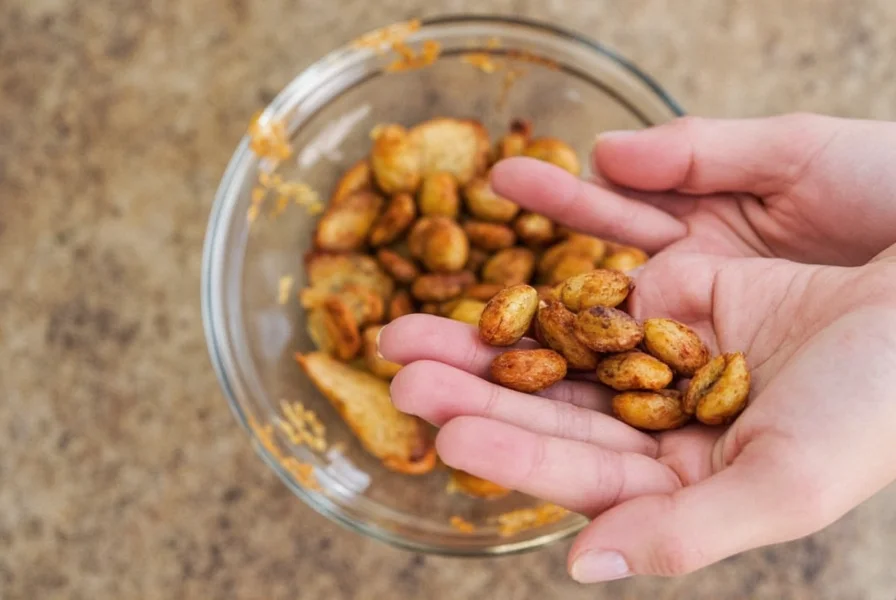Acidity plays a crucial role in flavor development, but when dishes become too tart or sour, they can overwhelm your palate. Understanding how to balance acidity in food transforms cooking from a series of happy accidents into a precise culinary science. Professional chefs rely on specific techniques to correct overly acidic dishes while maintaining flavor integrity—techniques you can easily apply in your home kitchen.
Why Acidity Balance Matters in Culinary Arts
Acidity provides brightness and contrast in dishes, cutting through richness and enhancing other flavors. However, excessive acidity creates an unbalanced profile that dominates other taste elements. The ideal acidity level varies by cuisine and dish type—what works for a Thai curry differs from Italian tomato sauce. Recognizing when acidity has crossed from enhancing to overwhelming is the first step toward correction.
Identifying Overly Acidic Dishes
Watch for these common signs that your dish needs acidity correction:
- Sharp, puckering sensation that lingers on the palate
- Flavors feel one-dimensional with sourness dominating
- Difficulty tasting other ingredients clearly
- Unpleasant aftertaste that lacks complexity
| Acidity Balancing Method | Best For | Implementation Tips |
|---|---|---|
| Sweetness Addition | Tomato sauces, vinaigrettes, fruit-based dishes | Add 1/4 tsp sugar at a time; honey works well for dressings |
| Fat Incorporation | Creamy soups, stews, pan sauces | Finish with cold butter or quality olive oil for emulsification |
| Starch Solutions | Tomato sauces, bean dishes, soups | Add small cooked potato pieces; remove before serving |
| Dilution Technique | Braises, soups, stews | Add broth or water in 1/4 cup increments |
| Alkaline Adjustment | Emergency correction for severe acidity | Pinch of baking soda (1/16 tsp); use sparingly |
Practical Techniques for Balancing Acidity in Food
Sweetness as a Counterbalance
Adding sweetness effectively neutralizes excessive acidity through flavor contrast. For how to reduce acidity in tomato sauce, try these approaches:
- Sugar: Start with 1/4 teaspoon increments in simmering sauces
- Honey or maple syrup: Adds complexity while balancing acidity in dressings
- Caramelized onions: Provides natural sweetness and depth (ideal for stews)
- Carrots: Simmer whole pieces in tomato-based dishes; remove before serving
Remember that different sweeteners interact uniquely with acids—honey works particularly well with citrus-based acidity, while sugar provides neutral correction for vinegar-heavy dishes.

Fat Incorporation Methods
Fats coat the palate and mellow sharp acidity. The professional technique of monter au beurre (finishing with butter) works wonders for fixing too much lemon in a dish:
- Remove pan from heat
- Add 1-2 tablespoons of cold, cubed butter
- Whisk gently until emulsified
- Return to low heat briefly if needed
Olive oil works similarly in cold preparations like vinaigrettes. For creamy dishes, a splash of heavy cream or coconut milk can balance acidity while adding richness.
Strategic Dilution Techniques
When wondering how to fix over acidic soup, controlled dilution often provides the cleanest solution:
- Add broth, stock, or water in 1/4 cup increments
- Simmer for 5-7 minutes after each addition
- Adjust seasoning after dilution (salt may need replenishing)
This method preserves the original flavor profile while reducing acidity concentration. It's particularly effective for tomato-based soups and stews where other balancing methods might alter the character too significantly.
Starch-Based Solutions
Starches absorb excess acid while adding subtle body. For natural ways to neutralize acidity in cooking, try these approaches:
- Add a small, unpeeled potato to simmering tomato sauce (remove after 15 minutes)
- Incorporate cooked rice or pasta into overly acidic soups
- Use a cornstarch slurry to both thicken and mellow acidity
The potato method works particularly well for how to balance acidity in food without introducing new flavors—ideal when you want to preserve the dish's original character.
Alkaline Adjustment (Use with Caution)
Baking soda provides immediate, dramatic acidity reduction but requires careful handling:
- Use only 1/16 teaspoon at a time
- Mix with a small amount of liquid before adding
- Apply only as a last resort for severely over-acidified dishes
Overuse creates soapy flavors and can affect texture. This technique works best for tomato sauces where slight chemical changes are less noticeable than in delicate fish dishes.
Dish-Specific Acidity Balancing Strategies
Tomato-Based Dishes
Tomato sauces often require acidity balancing due to naturally high acid content:
- Add a pinch of sugar during initial cooking
- Incorporate grated carrot for natural sweetness
- Finish with butter for richness that counters acidity
- Add cooked potato pieces during simmering
Citrus-Forward Dishes
For how to fix too much lemon in dish situations:
- Add complementary fruit juices (apple or pineapple)
- Incorporate honey instead of sugar for better flavor integration
- Add avocado for creamy texture that counters sharpness
- Dilute with coconut milk for tropical dishes

Vinaigrettes and Dressings
Rescue overly tart dressings with these techniques:
- Double the oil component while maintaining emulsion
- Add a touch of Dijon mustard for emulsification and flavor balance
- Incorporate honey or maple syrup for sweetness
- Add minced shallots for flavor complexity that distracts from acidity
Preventative Measures for Acidity Control
The best approach to balance sour taste in food is prevention:
- Taste as you go—add acidic components incrementally
- Balance acidity early in cooking when flavors are developing
- Consider the dish's final temperature (acidity intensifies when hot)
- Account for reduced sauces (acidity concentrates during reduction)
- Use pH testing strips for precision in critical applications
Troubleshooting Common Acidity Problems
When standard methods fail, try these advanced techniques:
- For dairy-based dishes: Add a small amount of acid-neutralizing ingredient to a separate portion, then blend with original
- When sugar makes dish too sweet: Counter with a pinch of salt to restore balance
- For delicate fish dishes: Use cream or crème fraîche rather than sugar
- When baking soda creates off-flavors: Add a tiny bit of acid (lemon juice) to neutralize excess alkalinity
Frequently Asked Questions
How do I fix a dish that's too acidic without changing the flavor?
The most flavor-neutral approach is strategic dilution with broth or water, or using the potato method for tomato-based dishes. Adding a small, unpeeled potato to simmering sauces absorbs excess acid without introducing new flavors. Remove the potato after 15-20 minutes of simmering for best results when trying to balance acidity in food while preserving original flavor profiles.
Can I use baking soda to reduce acidity in all dishes?
Baking soda works best for tomato-based sauces and hearty stews where its slight chemical reaction is less noticeable. Avoid using it in delicate dishes like fish preparations or custards, as it can create soapy flavors and affect texture. For most applications, start with 1/16 teaspoon mixed with a tablespoon of liquid, then adjust carefully—overuse creates off-flavors that are difficult to correct.
Why does my tomato sauce taste too acidic even when I follow recipes?
Tomato acidity varies significantly by variety and ripeness. Canned tomatoes often contain citric acid as a preservative, increasing acidity. Cooking concentrates flavors, making acidity more pronounced. To prevent this, add sweetness (1/4 tsp sugar) or a small carrot during initial cooking, and finish with butter. Understanding how to balance acidity in food specifically for tomato-based dishes ensures consistent results regardless of tomato quality.
How can I balance acidity in a dish that already has sugar?
When a dish already contains sugar but remains too acidic, try fat incorporation instead. Swirl in cold butter off-heat, or add a splash of olive oil to vinaigrettes. For soups and stews, a small amount of cream or coconut milk can balance acidity without increasing sweetness. Starch-based solutions like adding cooked rice or potato pieces also work effectively for how to fix over acidic soup without additional sugar.
Does salt help balance acidity in food?
Yes, salt can enhance other flavors and make acidity seem less pronounced, though it doesn't chemically reduce pH. When correcting excessive acidity, add salt after implementing other balancing techniques, as it can amplify both sweet and sour notes. For dishes that have become too sweet while balancing acidity, a pinch of salt can restore equilibrium—this is particularly useful for how to balance acidity in food without creating new flavor imbalances.










 浙公网安备
33010002000092号
浙公网安备
33010002000092号 浙B2-20120091-4
浙B2-20120091-4